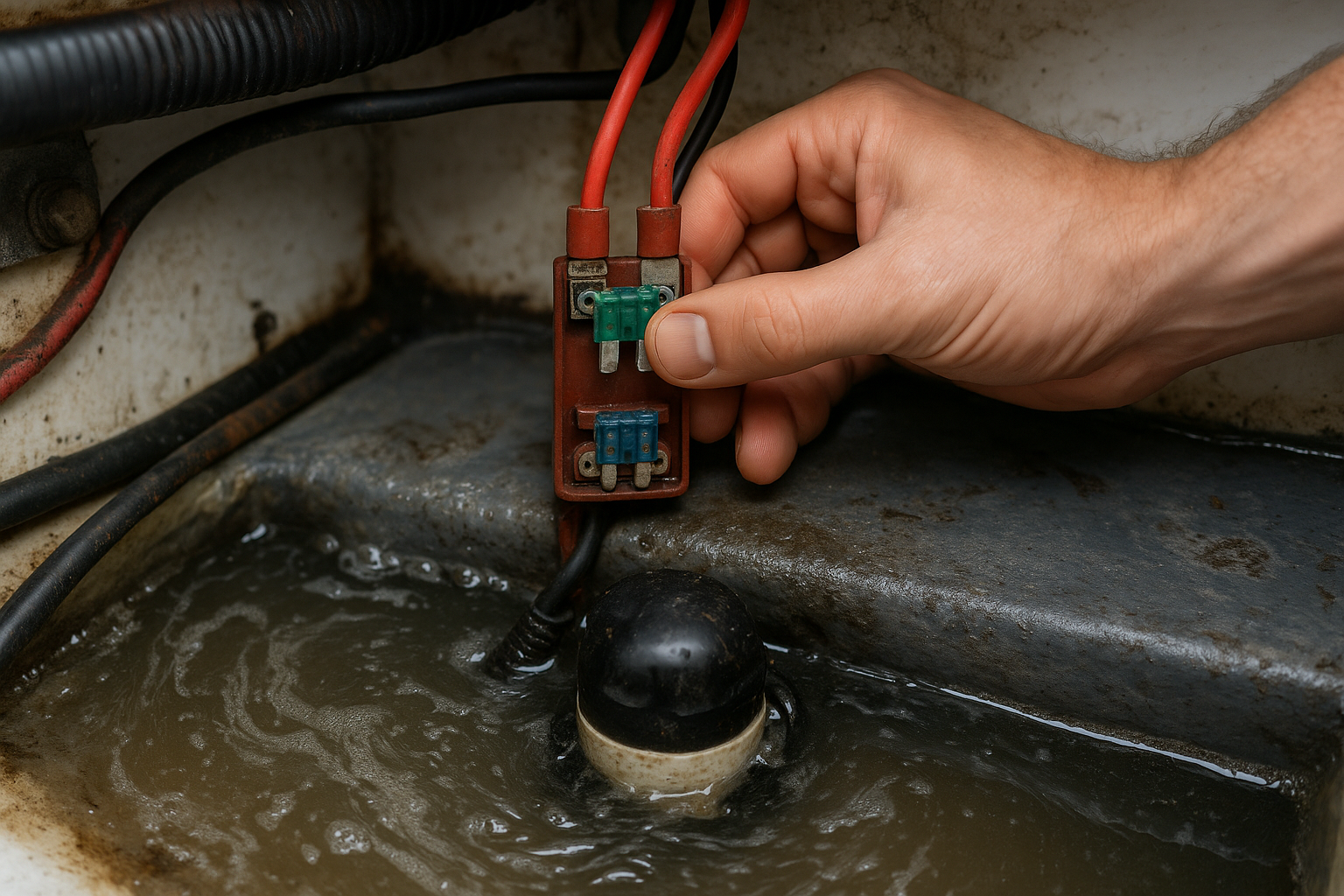Execution matters more than theory when water starts filling your boat.

A bilge pump failure isn't just an inconvenience - it's the difference between a safe vessel and a potential disaster. The circuit that powers this critical system demands immediate action when it starts showing signs of trouble.
The Hidden Cost of Hesitation
Most boat owners freeze when electrical systems act up. They second-guess, they Google, they wait for the "perfect moment" to address the issue. But bilge pump circuits don't care about perfect moments. They operate in a harsh environment where salt, moisture, and constant motion wage a relentless war against reliability.
The real challenge isn't diagnosing the problem - it's taking swift, decisive action before a simple circuit overload escalates into a cascade of electrical failures.
Speed Beats Perfection
The best troubleshooters don't wait for complete certainty. They move with purpose, following a battle-tested sequence that maximizes safety while minimizing downtime. This isn't about being reckless - it's about understanding that every minute of delay increases risk.
The most effective approach combines immediate response with systematic investigation:
- Kill power to the affected circuit immediately
- Document everything you observe before making changes
- Test each component in isolation
- Replace suspect parts rather than trying to repair them
- Verify the fix under real operating conditions
The Warning Signs Nobody Mentions
Circuit overloads rarely happen without warning. The system usually sends signals well before it fails completely. The problem is that most boaters have been trained to look for the wrong things.
These are the real indicators that demand immediate attention:
- Unusual pump cycling patterns
- Dimming lights when the pump activates
- Warm wire connections or mounting brackets
- Changes in pump sound or performance
- Breakers that feel warm to the touch
Beyond Basic Troubleshooting
The standard advice stops at checking fuses and resetting breakers. But professional marine technicians know that surface-level fixes often mask deeper issues. The real solution requires a systematic approach that addresses both immediate symptoms and root causes.
Every overload investigation should examine the entire electrical pathway, from power source to pump. This means testing wire integrity, checking connection quality, and verifying proper circuit protection.
The Upgrade Decision
Sometimes fixing the existing system isn't enough. Modern boats demand more from their electrical systems than ever before. What worked five years ago might not be sufficient for today's power requirements.
Smart upgrades focus on these critical areas:
- Wire gauge adequacy for current draw
- Circuit protection matching actual loads
- Pump capacity versus bilge volume
- Backup system integration
- Modern monitoring capabilities
Building Better Systems
The best solution to circuit overloads is preventing them in the first place. This means designing systems that anticipate failure modes and include built-in redundancy. It's not about spending more money - it's about spending it wisely on components and configurations that enhance reliability.
Professional marine electricians focus on creating robust systems that can handle real-world conditions. They understand that theoretical perfection means nothing if the system can't perform when it matters most.
The Reality Check
Merit in marine electrical work isn't measured in credentials or certifications. It's measured in systems that keep working when everything else fails. The ocean doesn't care about your training - it cares about results.
The next wave of marine electrical innovation will belong to those who understand this fundamental truth. They'll be the ones building systems that prioritize performance over complexity, reliability over features, and real-world execution over theoretical elegance.
Your bilge pump circuit isn't just another electrical system. It's the last line of defense between you and serious trouble. Treat it accordingly.
Keep Your Boat Ready for Anything
When it comes to your boat’s safety, there’s no room for hesitation. If your bilge pump circuit is acting up or you want to make sure your electrical systems are up to the challenge, let’s tackle it together. Call us at 305-290-2701 or Request Boat Repair or Service—we’re here to help you stay ahead of the next storm.






.png)